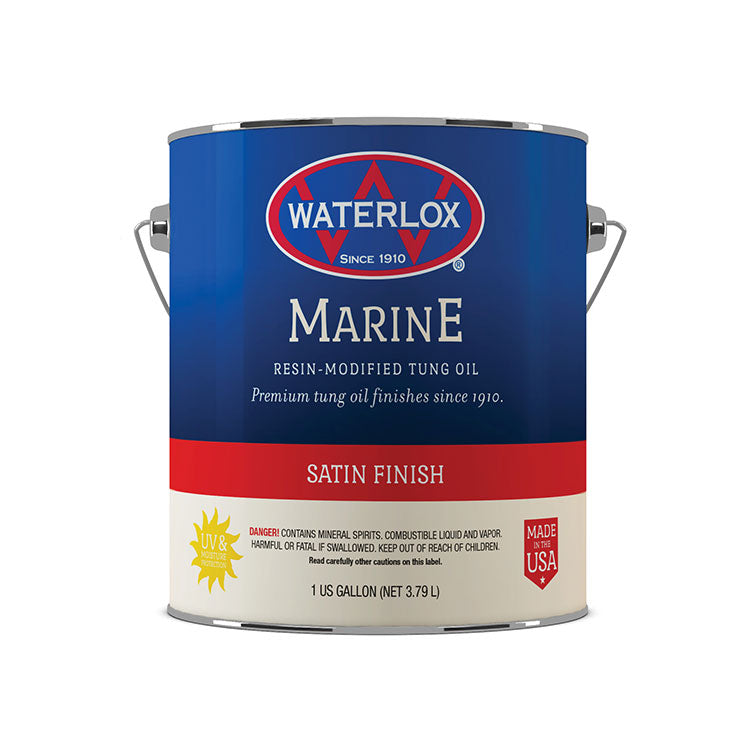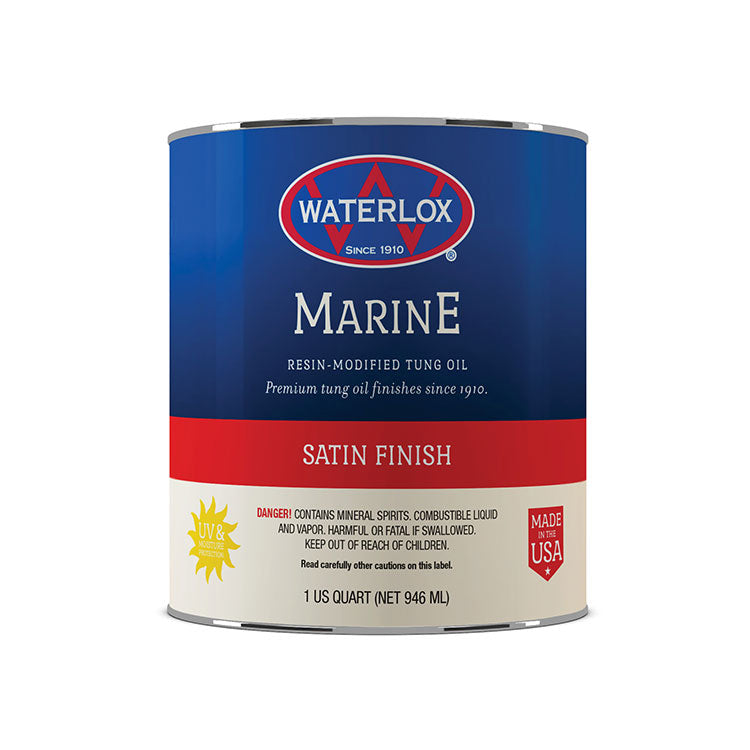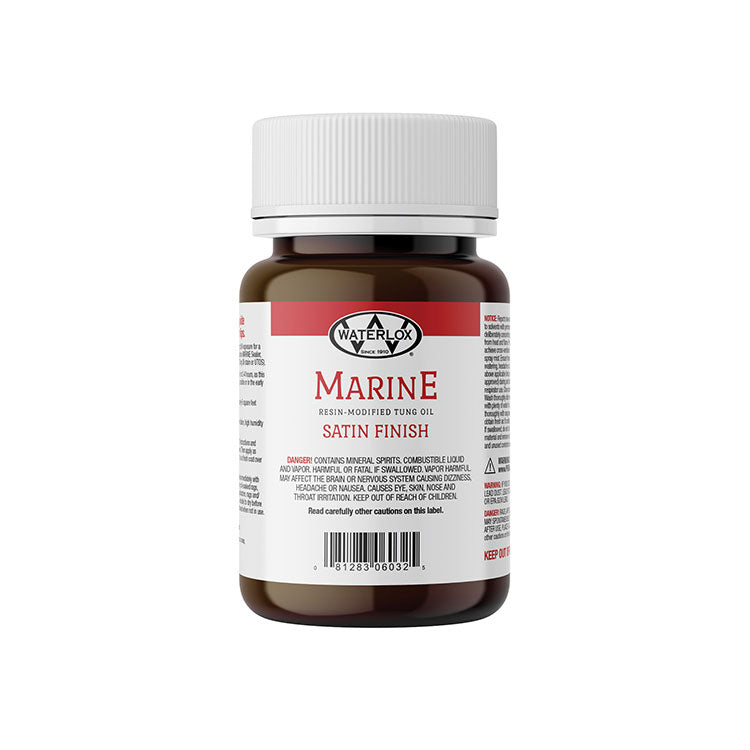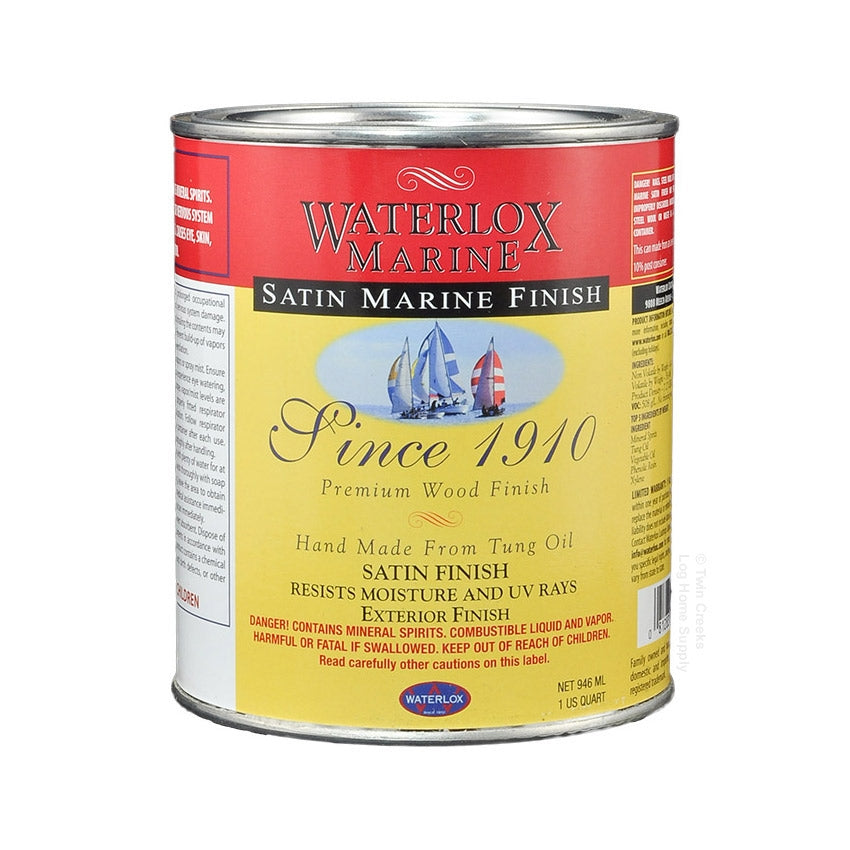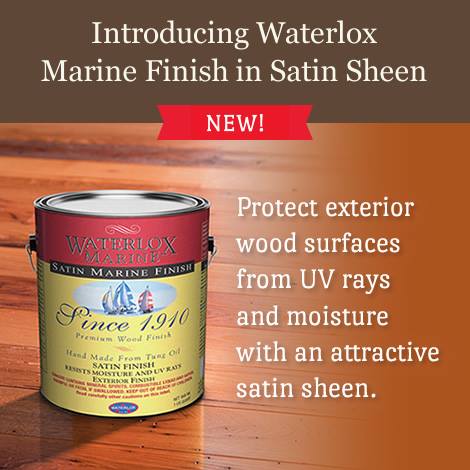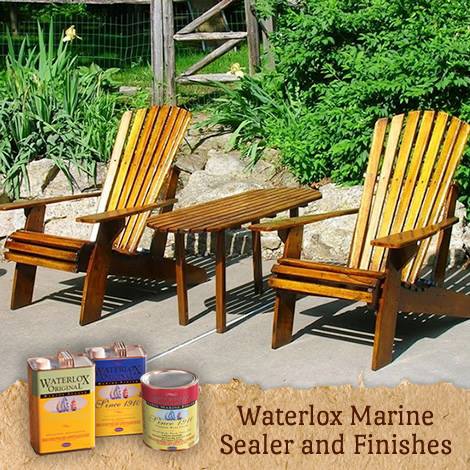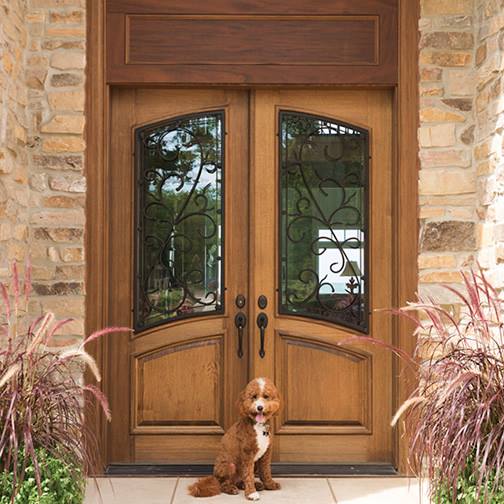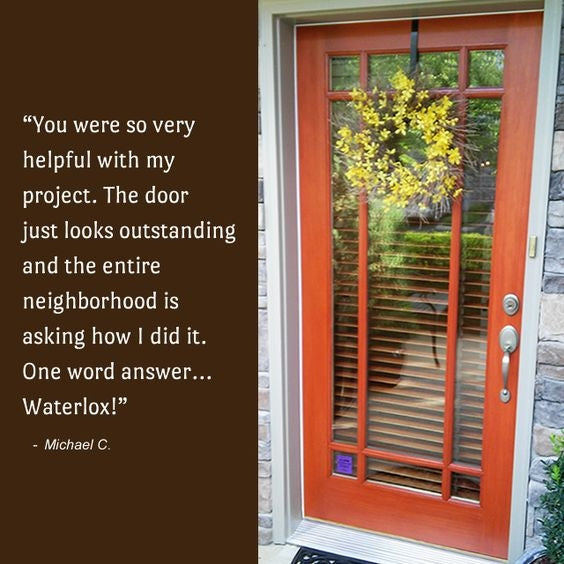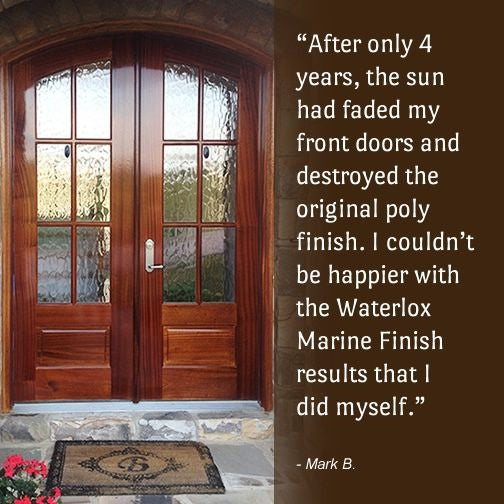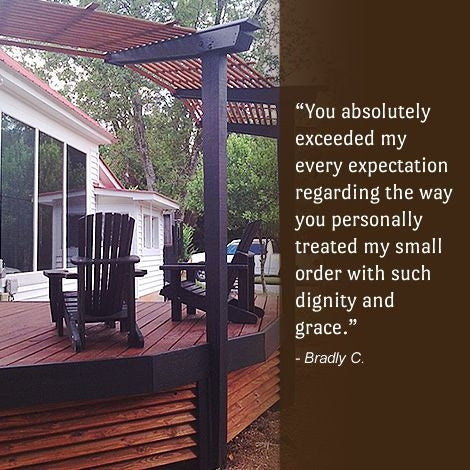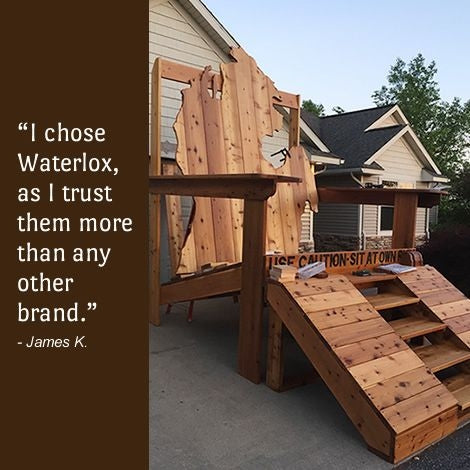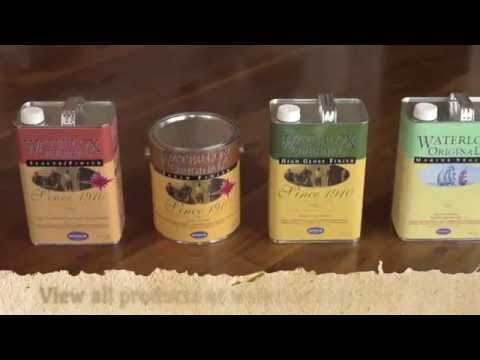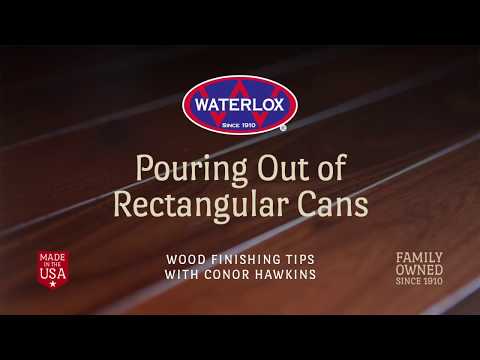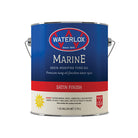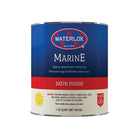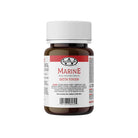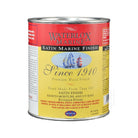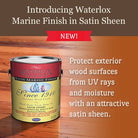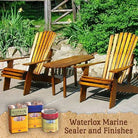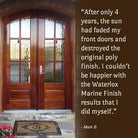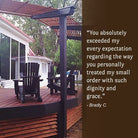Waterlox Marine Satin Finish
Details
Waterlox Marine Satin Finish
The origin of our name, Waterlox, stands for "locks out water.” Waterlox Original Marine finishing system is the perfect solution for any and all exterior wood finishing project(s) that are in harmful elements like moisture, direct Ultraviolet rays, salt and fresh water and harsh weather, including:
• All Marine Brightwork (Boat,Teak and Wood Work)
• Outdoor Furniture.
• Exterior Doors and Window Casings.
• Garage Doors, Entrances and Trim.
• Specially made for boat decks, bright work, spars and other heavy-duty exterior applications, such as exterior doors and garage doors.
• Not recommended for use on pressure-treated woods or exterior horizontal surfaces in direct sunlight, such as decks.
• Use as a finish coat for a satin sheen, exterior finish over base coat(s) of Waterlox Marine Sealer (TB 3809).
Please Note: This product is a finish only. You must first seal your wood with the Waterlox Marine Sealer (TB 3809). Use this product as your final coat to provide a Satin sheen.
Maintenance: With Waterlox, maintenance is as simple as applying another coat without any surface preparation other than cleaning. You will also have sufficient time to recoat before the wood becomes unprotected. Please Note: As with any exterior finish that forms a film, if the Waterlox Marine finishing system is left un-maintained, the UV will continue to shrink the film and the film will eventually peel.
Waterlox Marine Satin Finish Features & Benefits:
• Tung oil-based - Penetrates surface, easy to maintain, enhances beauty of wood.
• Flexible - Moves with the wood, does not chip, tolerates wide temperature range.
• Water resistant - Holds up to rain, sleet, snow, fresh or salt water.
• Resistant to Ultraviolet rays - UV causes the gloss level to fade which is the key to knowing it’s time to re-coat.
Waterlox Marine Satin Finish Details:
• Our traditional formulation is product number TB 6032.
• Produces a Satin Sheen appearance (30°-40° gloss level).
• Formulated as a traditional exterior Tung oil spar varnish in a satin sheen.
• Like all of our tung oil finishes, 90% of the resin portion of the formula is from renewable, natural resources.
• Forms a protective and elastic finish against sun/UV rays, harsh weather and moisture exposure.
• Penetrates and waterproofs when used as a finishing system in conjunction with Waterlox Original Marine Sealer (Waterlox Original Sealer/Finish can be used interchangeably).
• Easier to maintain than other exterior clear finishes.
Waterlox Marine Satin Finish Coverage Rate:
• One gallon covers approximately 500 square feet per coat.
• One quart covers approximately 125 square feet per coat.
• The number of coats needed depends on the porosity of the wood being finished.
• No thinning necessary.
Waterlox Marine Satin Finish Drying Time:
• The general rule of thumb is to wait 24 hours between coats.
• Poor ventilation, high humidity or cool temperatures may increase dry times.
Waterlox Marine Satin Finish Ventilation:
• Proper ventilation and adequate air circulation must be provided when using any wood finishing materials. Most oil-based varnishes dry upon exposure to oxygen, which is also known as “oxidative cure.” A lack of cross-ventilation (air exchange) provides less free oxygen, slowing the drying process. Cross-ventilation is the biggest factor affecting dry times.
• It is not recommended that any solvents or solvent-based materials be used in a non-ventilated area. It is the oxygen molecules in the air that interact with the varnish, creating a chemical reaction and causing the film to dry. Therefore, the better the ventilation (during and after all coats) the quicker the film obtains its final hardness and other properties.
• Read the directions on the product label(s) completely before using, including information related to the use of a respirator while applying the finish. Lingering odor indicates inadequate ventilation, high humidity or both. If you cannot ventilate the area choose another product.
Allow Proper Ventilation (if the project is completed somewhere other than outdoors):
• While applying the coating,
• During the curing process (first 24 hours after each coating is applied), and
• Continue to ventilate the area for 7 days after the final coat is applied.
Waterlox Marine Satin Finish Application Tools:
• For safety: rubber gloves, goggles and a respirator fitted with an organic cartridge.
• A natural bristle paint brush. This type of brush will hold more finish than a synthetic bristle brush.
• A lint-free rag.
• A container that allows decanting of the amount of finish to be used for the project.
• A vacuum, compressed air, or rag wetted with mineral spirits (paint thinner)
• Mineral spirits, turpentine or paint thinner.
Waterlox Marine Satin Finish Preparation & Application Instructions For New, Weathered or Uncoated Wood:
• Prepare the surface by sanding with 80 – 120 grit sandpaper and wipe clean with a tack cloth or cloth dampened with paint thinner.
• Other methods of preparing weathered wood such as deck cleaners (oxalic acid), TSP (trisodium phosphate), power washing or a liquid bleach solution are all acceptable methods.
• Follow instructions provided by the manufacturer and always clear water rinse the wood surface and let dry a minimum of 48 hours before applying the finish.
• If there are any glossy patches or mill glaze, scuff sand those areas with 60 – 80 grit sandpaper and wipe clean.
Tips:
1. Waterlox does not recommend coating over new pressure-treated wood (requires a 6 - 8 week weathering period) or lumber that is water-repellent treated (requires a minimum 12 month weathering period).
2. Always remove any mildew, fungi, or nail rust prior to application with either oxalic acid or a bleach solution. Always clear water rinse the surface after cleaning.
New Wood Application:
1. Test an inconspicuous area of your project or a scrap piece of wood from your project before assuming the need for a stain coat. Even if stain is not a consideration, test all intended coats in a test area before beginning the entire project.
2. Preparation of the surface is the most important step in the finishing process. To maximize the penetration of Waterlox Marine Sealer, sand the surface with 100 or 120 grit sandpaper.
3. When sanding is complete, clean the surface with a rag dampened with regular mineral spirits (paint thinner) which will attract any remaining dust and dirt. Regular mineral spirits (paint thinner) is recommended because the Waterlox Marine finishing system is based in this solvent and are therefore compatible with it if any residual is left on the surface. Regular mineral spirits (paint thinner) also evaporates slower than other more intense solvents such as lacquer thinner. This step should be completed before finishing the project, between each coat and after doing any sanding.
4. The number of base coats of Waterlox Marine Sealer will vary based on the type of wood being finished. As a general rule, most hardwoods will require two base coats. Softer woods like pine, fir, walnut or spruce will require three.
Below is a breakdown of the number of coats to apply to your project:
• Hardwoods: Oak, Ipe, Brazilian cherry, etc.
1 Coat - Waterlox Marine Sealer.
2 Coats - Waterlox Marine Finish High Gloss or Satin Sheen.
All coats applied at 500 square feet per gallon per coat or 125 square feet per quart per coat.
• Softwoods: White/Red Pine, Fir, Spruce, Cedar, etc.
2 Coats - Waterlox Marine Sealer.
2 Coats - Waterlox Marine Finish High Gloss or Satin Sheen.
All coats applied at 500 square feet per gallon per coat or 125 square feet per quart per coat
5. Apply all coats liberally with the grain using a quality natural bristle brush at the recommended spread rate. If your intended application method is with a rag versus applied liberally with a brush, this will most likely result in only ½ to ¼ of the recommended film build for each coat. If this is your preferred method of application, double or quadruple the amount of coats applied.
6. Sanding for adhesion purposes is not required between coats of Waterlox Marine Tung oil finishes. This makes Waterlox unique and different from most surface finishes which need abrasion for inter-coat adhesion.
7. Allow each and every coat to dry for 24 hours. Once the last coat of finish has been applied, allow it to cure for 72–96 hours. During this cure time, do not use the surface.
Waterlox Marine Satin Finish Maintenance Instructions:
• As your surfaces age and the UV degrades the film, the gloss level will soften and reduce. Simply clean the surface and re-coat with Waterlox Marine Finish Simply clean the surface and recoat with a coat of Waterlox Marine Finish (same formula used as the last coat in the system – High Gloss or Satin Finish).
• To determine if recoating is necessary, spray water lightly on the wood surface. If the water darkens the wood, then it’s time to recoat. Maintenance schedules vary widely according to the location and exposure of the wood surface to the harmful outdoor elements.
The following general rules apply:
• Waterlox Marine Sealer and Waterlox Marine Finish High Gloss do not require shaking, stirring or mixing. Waterlox Marine Finish Satin Sheen requires stirring before and during use.
• The Waterlox Marine finishing system products are penetrating oil finishes that are formulated to self-level. Do not wipe on and off the finish.
• If more than one container of finish is needed to complete a coat, the containers should be batched together before starting the coat.
• If Waterlox Marine Finish is applied on a wood surface in a location that receives partial or full sunlight, the surface should be cleaned as often as needed to reduce the accumulation of dirt build-up. The length of time and intensity of outdoor exposure will require a re-coat of the product that will be determined by a visual inspection of the surface.
• A re-coat should be performed before or when:
1. Any noticeable graying of the wood surface is noticeable,
2. Any whitening of the surface (matte or no gloss appearance) is noticeable,
3. Any other appreciable color change is noticeable,
4. Any staining by natural elements is noticeable (water run off lines, rust staining from gutters or any other metallic source) - wash these areas to remove the staining prior to re-coating, or
5. Any other erosion or suspected film loss is noticeable.
• Prior to re-coating the surface, wash the surface completely using a low-psi power washer or a mop or sponge with a mild solution of soap or white vinegar. Simply wash the surface and rinse with clear water. Once the surface is clean and dry, apply another full-bodied (no thinning with solvent) coat of Waterlox Marine Finish in the same manner as it was initially applied. It is imperative to keep the film build at or near initial thickness and the surface as clean as possible to provide the proper protection. Do not apply a coat in direct sunlight.
• Extreme Conditions: If Waterlox Marine Finish is applied on a wood surface in a location that is subject to extreme conditions, such as near the ocean or near an industrial setting where wind, rain, dirt, salt and intense sunlight are prevalent, the surface may need to be re-coated once or twice per year.
Waterlox Marine Satin Finish Clean Up
• Clean application tools immediately with paint thinner (mineral spirits) or turpentine. Properly dispose of rags, applicators and waste. Read carefully cautions on the product label(s).
Waterlox Marine Satin Finish Do’s & Don’ts for Best Performance:
Dos…
• Apply when surface and air temperatures are between 45° F and 90° F (7-35° C).
• Saturate all end grains well.
• Apply in the direction of the grain.
• Allow 24 hours between coats.
• Moisture content of wood should be below 18%.
Don’t’s...
• Do not apply in direct sunlight.
• Do not apply when surface is hot to the touch.
• Do not apply when rain or dew is expected within 4 hours.
• Do not shake or stir contents of cans.
• Do not thin.
Waterlox Marine Satin Finish Storage Tips:
• Keep containers of Waterlox closed when not in use and keep in a cool, dry place. If stored properly, an unopened can of Waterlox has an almost indefinite shelf life. Cold temperatures will not negatively affect the product, but if Waterlox has been chilled or exposed to freezing temperatures, allow the product to stand for at least 6 hours in temperatures above 60° F before using.
• DO NOT artificially heat Waterlox products.
• Partially filled containers may gel since Waterlox dries through oxidation. When a container is opened, it is exposed to oxygen and the remaining unused portion may begin to oxidize. This leads to skinning and eventually gelling of the product.
• For the best results, pour the Waterlox you need to complete your job into another container and promptly reseal the original container (replace both the metal seal and screw top on the oblong can(s) and the lid on the round can(s)).
• DO NOT return any unused portion to the original can.
For proper storage, oxygen inside the Waterlox can must be displaced, by one or more of the following methods:
• Decant the product into a smaller airtight glass or metal container. DO NOT use plastic. If using a previously vacuum-sealed jar (e.g. pickles or baby food) use plastic wrap inside the lid to create an adequate seal.
• Use clean marbles or stones to raise the level of the finish and thereby displace the oxygen.
• With rectangular cans, squeeze the sides to push the liquid up and seal before the air returns into the can.
• “Float” the product with an inert gas, such as carbon dioxide or argon, or Bloxygen that is heavier than air.
Waterlox Marine Satin Finish Resources:
Reviews
Product Questions
| Item | |
|---|---|
Brand |
Waterlox
|
Size |
1 Quart
|

